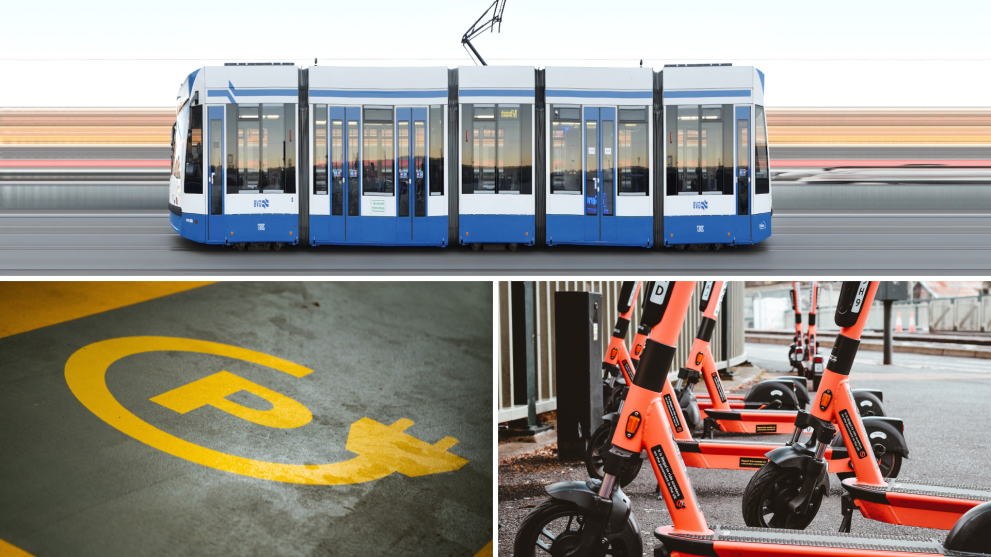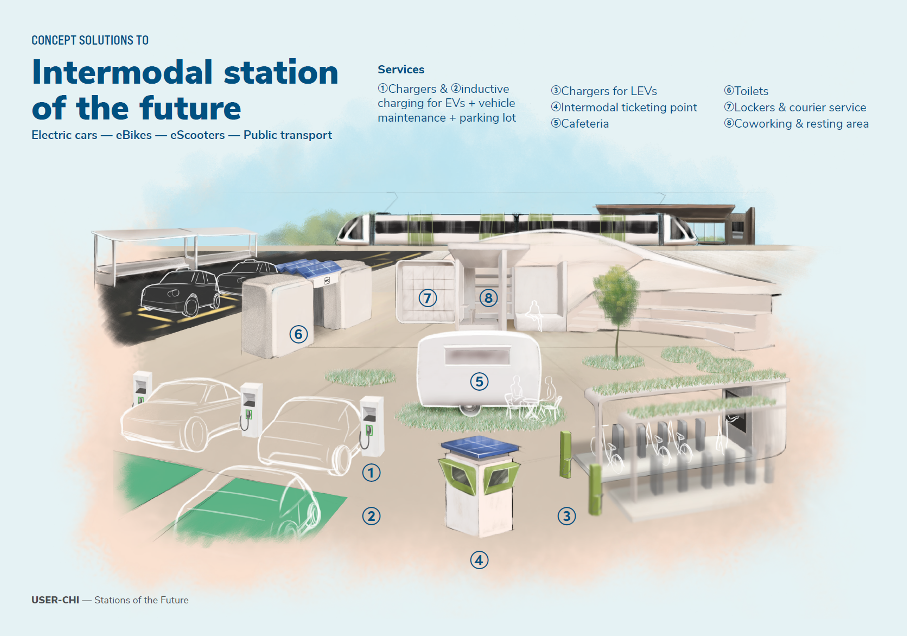
Scene setters
Cities account for 70% of global emissions, and the transport sector contributes to a high part thereof. With manufacturers of new cars and vans in Europe having to meet a 100% zero-emission target from 2035 onwards, electric mobility is one of the solutions to decarbonise the transport sector, claimed Thomas Lymes (Policy Advisor and Project Coordinator, Eurocities). However, some challenges lie ahead of its mass deployment, such as investing and in charging infrastructures and competing for the limited public spaces available, guaranteeing also a spread outreach.
Other challenges were also presented by Pedro Homem Gouvela (Coordinator of the WG Safety & Security, POLIS). He mentioned the need to create multimodal electric-hubs functioning as parking and charging stations with fire-proof charging lockers, and decrease speed limits on streets, mostly monopolised by cars, to guarantee safety to electric micro-mobility solutions (e-bikes, e-scooters). Shared and owned electric micro-mobility solutions are in fact an alternative to owning cars and a complementing solution to public transport.
Despite the growing trend of individual ownership of light electric vehicles, prices of foldable e-bikes are still inaccessible to many people, second-hand markets are yet to be developed, and prices of electricity are unlikely to drop in the short term, the two scene setters argue.
Rotterdam (the Netherlands)
The first best practice presented is from the city of Rotterdam (the Netherlands), which is developing a 40 Km2 Zero-emission zone for freight vehicles through a local ‘green deal’ (Zero Emission City Logistics). The zone will be effective in 2025 for the most polluting light and heavy vehicles (< Euro5), and for all fuelled-based light and heavy vehicles by 2030, remaining accessible only for electric and H2 ones.
As explained by Jos Streng (Transport Planner, Rotterdam), the city’s logistics strategy is based on 3 pillars. Firstly, providing suitable space for logistics through a long-term spatial planning, ensuring micro hubs for logistics within the city centre. Secondly, “community building”, through the Logistiek010 community that is advertising events, news, and maintaining an informative website. Lastly, a “personal approach”, as the city provides companies with a tailored free consultation service to help them evaluate the effects of ZELC on their businesses, through what is called the “Ecostars” programme.
Barcelona (Spain)
With currently 1,140 buses and 219,4 Km of bus lines, the city of Barcelona (Spain) is planning to renovate its fleet with new electric and hydrogen vehicles, as well as GNC-hybrid ones, reducing the diesel and diesel-hybrid based vehicles. The new city’s acquisition plan was presented by Josep-Maria Armengol (TMB Barcelona), comprises 210 new e-buses, 46 new H2 buses, and 154 new GNC-hybrid biogas-based buses in the period 2021-2024.
The USER-CHI project
The last panellist was Juan Gimenez (IBV Valencia), who presented the results of the Station of the Future Handbook, and its preparation phase, within the scope of the USER-CHI project.
The handbook shows a set of guidelines and recommendations for designing the perfect user-centric charging station of the future. Four different multimodal stations and their respective business models are defined in the publication: an intermodal station, an urban station, a highway station, and a station for Light Electric vehicles.
The handbook is the outcome of qualitative and quantitative user experience research and of a co-creation workshop that developed an example of an intermodal station.

Concluding remarks
The webinar was closed by Michele Tozzi (UITP), who presented 3 trends and 3 challenges to decarbonise public transport.
Constructive policies like the Fit for 55 package are essential to drive decarbonization in market and cities (1). Markets are driven by new business models that minimize technological and financial risks on energy operators and providers (2). Cities show often higher ambitions and stronger leadership than States when implementing zero-emissions strategies (3).
Biggest challenges are the need to fulfil operational requirements and enlarge cleaner fleets (1), the decreased level of public ridership, currently at 80% from pre-pandemic levels, (2) and the inclusion of life cycle assessments (LCAs) in the procurement policy of public transport.
Details
- Publication date
- 24 April 2023
